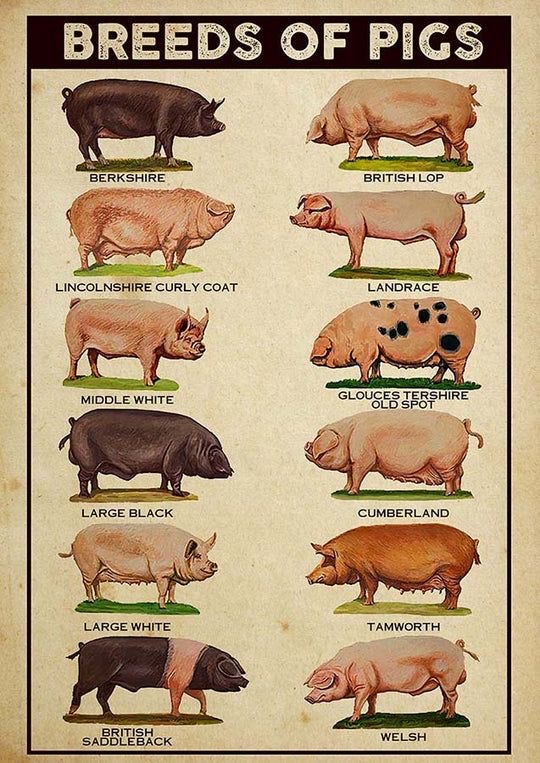Pigs are omnivores, displaying a diverse diet that includes grains, vegetables, fruits, and even small animals. Their digestive system is monogastric, similar to humans, and they possess a specialized stomach for efficient food processing. Pigs are highly social animals, often found in groups called sounders, and they communicate through various vocalizations, grunts, and body language.
The reproductive system of pigs is prolific, with sows capable of giving birth to large litters of piglets. The piglets are born with a fine layer of bristles, which later develops into a coarse coat. Farmers commonly raise pigs for their meat, known as pork, which is a staple in many cuisines worldwide. Additionally, other pig by-products, such as lard and various organs, are utilized in culinary and industrial applications.
Pigs play a crucial role in agriculture as they are often used in tillage, where they root and forage, helping to control weeds and pests. They are also employed in waste management, converting organic waste into valuable manure. Various breeds of pigs exist, each with distinct characteristics suited to specific purposes, such as meat production, pet keeping, or showmanship.
Despite their agricultural importance, pigs are susceptible to diseases, and proper management practices are essential for maintaining their health. Modern pig farming involves controlled environments, nutritional planning, and veterinary care to ensure optimal growth and well-being. Pigs have also become popular as pets due to their intelligence and affectionate nature.
The pig is a versatile and adaptable domesticated animal that has played a crucial role in human history, providing sustenance, labor, and companionship. Its unique characteristics, ranging from social behavior to dietary habits, contribute to its significance in various cultural, culinary, and agricultural contexts around the world.

